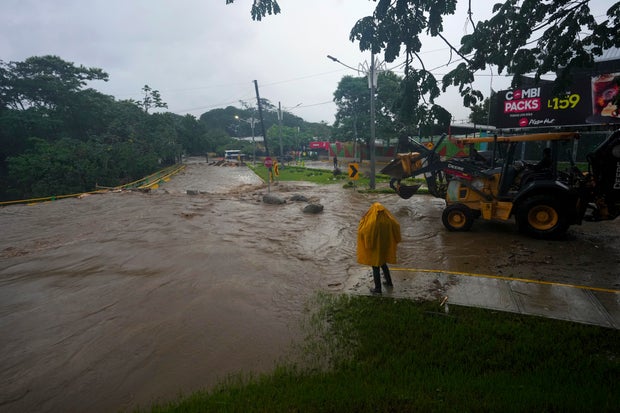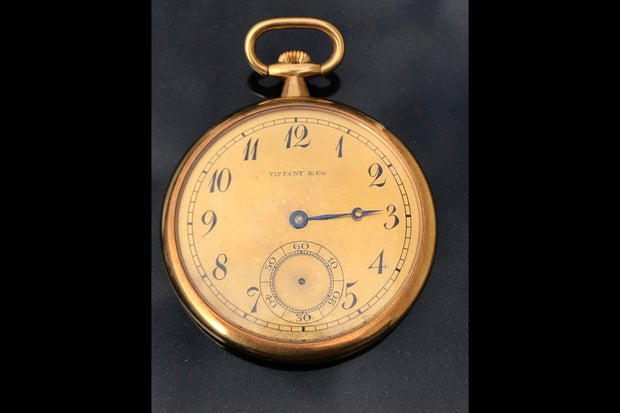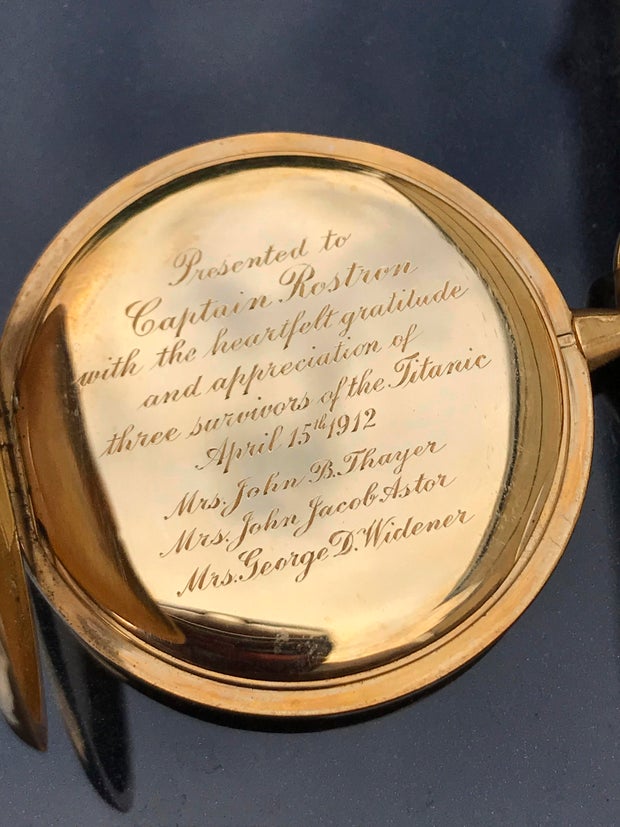CBS News
How do you make a portrait of a child who isn’t there? Photographer Lou Bopp found a way, but it wasn’t easy.

In early 2018, I was deplaning after an 18-hour flight when Steve Hartman called. He had an idea: to photograph the still-intact bedrooms of kids who had been killed in school shootings.
It’s a headful. And six years later, I still don’t have an “elevator pitch” for the project — but then, I don’t often talk about this project. It is by far the most difficult I have ever worked on.
When Steve, my friend of about 25 years, asked me if I would like to be involved, I said yes without hesitation — even though I didn’t think we would get any families to agree. There is no way that I would have said no to partnering with him on this.
Emotionally, I was not sure how I would get through it. Within a few months I was on my way to Parkland, Florida. Alone. I’m not sure that I realized that I would be on my own.
But here I was. An on-location commercial photographer who focuses on people and pets to create compelling, honest, textural and connective moments for large brands, per my LinkedIn professional profile, on a project where there is no one to take photos of — for the most brutal of reasons.
How do you make a portrait of a child who is not there?
In each of these children’s rooms — the most sacred of places for these families — there was the sense that the child had just been there, and was coming right back. It was as if they’d just left their room like that when they went to school in the morning and were returning in the afternoon.
I wanted to capture that essence.
Most kids’ bedrooms are their very own special places, and these were no different. I looked everywhere, without touching anything. I photographed inside trash cans, under beds, behind desks. Their personalities shone through in the smallest of details — hair ties on a doorknob, a toothpaste tube left uncapped, a ripped ticket for a school event — allowing me to uncover glimpses as to who they were.
But there was an emotional challenge in addition to that creative one. Over the course of more than six years, we visited with many families around the country. The parents I spoke with seemed grateful that I was there. But each time I received a call or text from Steve about a new family, my heart sank.
It meant another family had lost a child.
I find it unfathomable that children being killed at school is even an issue. It makes no sense. It’s impossible to process. The night prior to each one of the family visits, I didn’t sleep. And I knew I wouldn’t going into the project. It’s not a self-fulfilling prophecy. It is nerves. And empathy. And sorrow. And fear.
In my notes from early on in the project, back in 2018, writing in seat 6H on the flight back from Nairobi, I reflected on the emotional task ahead.
“This is going to be one of the most difficult things ever, emotionally, for me, and not just work related. As I read my research documents, I get visibly emotional,” I wrote, noting my gratitude that the dark cabin prevented the other passengers from seeing me.
The prospect brought my own fears to the fore, both for myself — “I can’t help thinking about Rose,” my daughter, “and what if. I’ve lost sleep over envisioning the what-ifs well before Parkland” — and about and for meeting the families in the project: “When I read about April & Phillip and Lori’s plight, I somehow, for some reason put myself in their emotional position even though that is impossible, I have no idea, it’s beyond comprehension, I do not know what they feel. I do not know what I am going to say to them, I’m scared beyond belief. And alone.”
But just days later, I was photographing the first assignment for the project: Alyssa Alhadeff’s room. She was just 14 years old when she walked out of that room to head to Marjory Stoneman Douglas High School. I was shaky meeting the family friend who greeted me at the house. Her daughter was Alyssa’s best friend, and a photo of the two girls was on the table.
According to my notes, “The room was a beautiful teenager’s messy room. My emotions were kept in check the way that they usually are; By hiding behind the camera. I removed my shoes before entering. My heart was pounding and it reverberated through my body and soul, I felt like I was in one of the most sacred and special places on Earth. I was so careful not to touch anything.”
I left feeling ready to explode in sadness and anger.
Later that day, I photographed Carmen Schentrup’s room. Her younger sister had survived the Parkland shooting, but 16-year-old Carmen was killed in her AP Psychology class. Meeting her parents, April and Phillip, was what I was most scared of.
“I feel so much pain and compassion for them and I don’t want to say the wrong thing, drop cliches etc.,” I wrote at the time. “I spoke to Steve for guidance. He said, just be you. That’s all I can do. Just be me. He was right, those three words helped carry me through this entire project. Just be me.”
April let me in, and I worked quickly, only meeting Phillip as I was leaving. “The conversation felt like we all three were just trying to hold it together. I cannot imagine what they are going through, my heart hurts for them. This was / is such a painful project, and reconciling it will be impossible.
“I think about how anything can happen at any time to any of us. Literally. You never know,” I wrote.
After only about 16 hours on the ground in Florida, I was done with the first portion. I felt the project was a must, but I also dreaded the next call from Steve about the next family. I didn’t know when that call would come — many years later, or the very next day, possibly never.
But last month, we — and the documentary crew that filmed us working — completed this project. While I haven’t seen it yet, I know Steve’s piece won’t be a typical Steve Hartman segment. How could it be? I know he struggled too, and we both have spent a lot of time processing this.
I remember one August evening, I was devastated as I left the home of one of the families. Within minutes, I passed an ice cream shop crowded with other families — seemingly carefree, full of joy and laughter. The juxtaposition, mere minutes apart, cracked my soul.
I hope some way, somehow, this project can facilitate change — the only possible positive outcome for this I could comprehend. After the news cycle ends, these families will still be living with an incomprehensible nightmare.
CBS News
Tropical Storm Sara makes landfall in Belize after drenching Honduras

Tropical Storm Sara made landfall in Belize on Sunday as forecasters expect heavy rain to cause life-threatening flash flooding and mudslides.
The storm made landfall near Dangriga, about 55 miles southeast of the capital Belmopan, the Miami-based National Hurricane Center said.
This comes after Sara drenched the northern coast of Honduras, where it stalled since Friday, swelling rivers and trapping people at home.
Moises Castillo / AP
One death was reported Saturday morning by Honduras Emergency Management, who also said that there have been at least 90 rescues and over 47,000 people affected by the storm.
The Hurricane Center’s tropical storm warning as of Sunday included Honduras’ Bay Islands as well as the country’s northern coast from Punta Castilla to its border with Guatemala; the Caribbean coast of Guatemala; Belize’s coast and northward into the coast of Mexico’s state of Quintana Roo, from Chetumal to Puerto Costa Maya.
The storm, which is moving at 6 mph, will continue to move inland over the Yucatan Peninsula and could drop up to 10 inches of rain across the area, with localized totals reaching 15 inches, through early next week. The conditions “will result in areas of flash flooding, perhaps significant, along with the potential of mudslides,” according to the Hurricane Center.
NOAA/National Hurricane Center
“A storm surge could raise water levels by as much as 1 to 3 feet above ground level near and to the north of where the center of Sara crosses the coast of Belize,” the center said Sunday. “Near the coast, the surge will be accompanied by large and destructive waves.”
Sara is the 18th named storm of the 2024 Atlantic Hurricane Season, which officially runs from June 1 until Nov. 30, with activity typically peaking between mid-August and mid-October. An average season brings 14 named storms, seven hurricanes, and three major hurricanes, according to the National Oceanic and Atmospheric Administration, which did predict the 2024 season would produce “above average” numbers.
CBS News
Gold pocket watch given to captain who rescued Titanic survivors sells for record price

A gold pocket watch given to the ship captain who rescued 700 survivors from the Titanic sold at auction for nearly $2 million, setting a record for memorabilia from the ship wreck.
The 18-carat Tiffany & Co. watch was given by three women survivors to Capt. Arthur Rostron for diverting his passenger ship, the RMS Carpathia, to save them and others after the Titanic struck an iceberg and sank in the north Atlantic on its maiden voyage in 1912.
Andrew Aldridge/Henry Aldridge and Son via AP
Auctioneers Henry Aldridge and Son, who sold the watch to a private collector in the United States on Saturday for 1.56 million British pounds, said it’s the most paid-for piece of Titanic memorabilia. The price includes taxes and fees paid by the buyer.
The watch was given to Rostron by the widow of John Jacob Astor, the richest man to die in the disaster and the widows of two other wealthy businessmen who went down with the ship.
Astor’s pocket watch, which was on his body when it was recovered seven days after the ship sank, had previously set the record for the highest price paid for a Titanic keepsake, fetching nearly $1.5 million (1.17 million pounds) from the same auction house in April.
Auctioneer Andrew Aldridge said the fact that Titanic memorabilia has set two records this year demonstrates the enduring fascination with the story and the value of the dwindling supply and high demand for ship artifacts.
“Every man, woman and child had a story to tell, and those stories are told over a century later through the memorabilia,” he said.
Rostron was hailed a hero for his actions the night the Titanic sank and his crew was recognized for their bravery.
Andrew Aldridge/Henry Aldridge and Son via AP
The Carpathia was sailing from New York to the Mediterranean Sea when a radio operator heard a distress call from the Titanic in the early hours of April 15, 1912 and woke Rostron in his cabin. He turned his boat around and headed at full steam toward the doomed vessel, navigating through icebergs to get there.
By the time the Carpathia arrived, the Titanic had sunk and 1,500 people perished. But the crew located 20 lifeboats and rescued more than 700 passengers and took them back to New York.
Rostron was awarded the U.S. Congressional Gold Medal by President William Howard Taft and was later knighted by King George V.
Madeleine Astor, who had been helped into a lifeboat by her husband, presented the watch to Rostron at a luncheon at her mansion on Fifth Avenue in New York.
The inscription says it was given “with the heartfelt gratitude and appreciation of three survivors.” It lists Mrs. John B. Thayer and Mrs. George D. Widener alongside Astor’s married name.
“It was presented principally in gratitude for Rostron’s bravery in saving those lives,” Aldridge said. “Without Mr. Rostron, those 700 people wouldn’t have made it.”
CBS News
Extended interview: Cher – CBS News

Watch CBS News
Be the first to know
Get browser notifications for breaking news, live events, and exclusive reporting.












